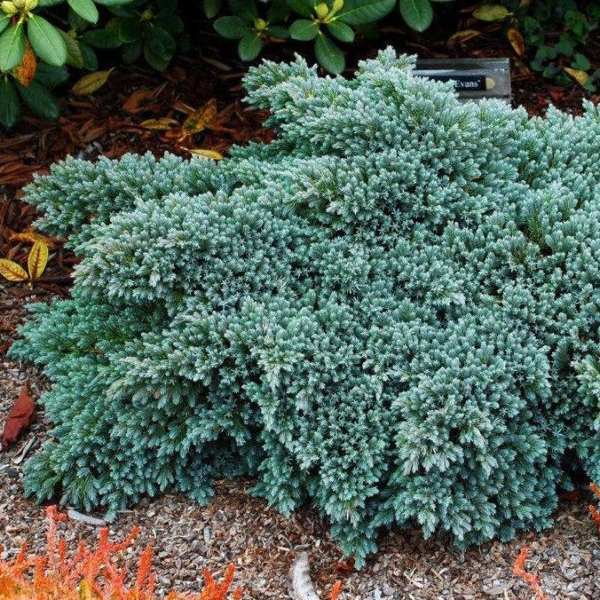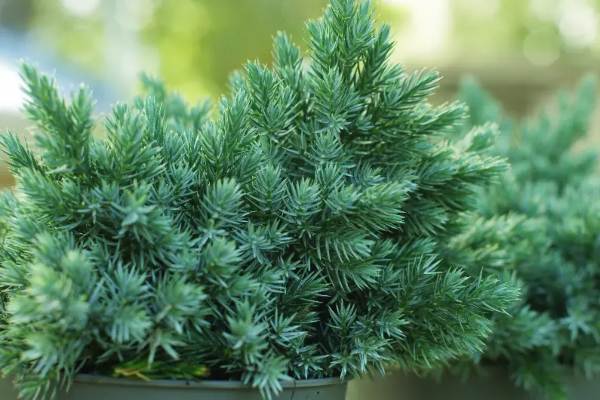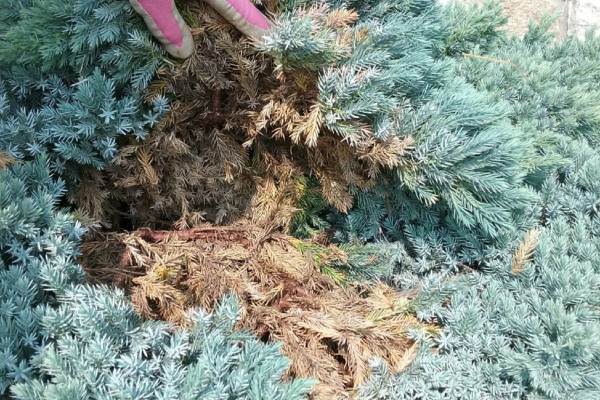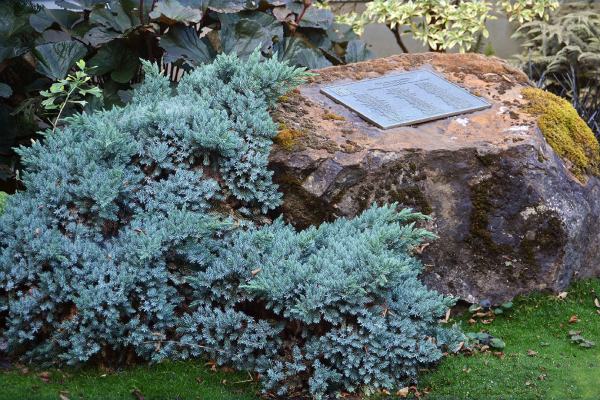Blue Star Juniper, scientifically known as Juniperus squamata ‘Blue Star’ is a compact evergreen shrub that enhances landscapes with its distinctive slivery blue-green foliage and star-like needle clusters. This shrub is characterized by its short, pointed needles, which differ from the longer needles of other juniper species. Similarly, it produces female cones resembling berries, each containing a single seed. The blue star juniper belongs to the Cypress family and is native to Asia. In this article, we will provide detailed information on how to grow and care for Blue Star Juniper.
Plant Descriptions
Plant Type: Shrub
Scientific Name: Juniperus squamata ‘Blue Star’
Common Name: Blue Star juniper, flaky juniper, Himalayan juniper, singlessed juniper
Family: Cupressaceae
Species: Squamata
Genus: Juniperus
Season: Spring
Native Areas: Asia (Middle East, China, and Taiwan)
Toxicity: Toxic for people and pests
Growth Habits
Blue Star Juniper is a slow-growing shrub, which will take several years to reach its mature size. Depending on environmental conditions, it may remain even smaller and more compact than expected. It typically grows to a height of 1 to 3 feet and spreads outwards to form a dense mound rather than growing tall. This compact growth habit makes it suitable for various garden settings including rock gardens, borders, and containers.
Varieties of Juniper Squamata

Juniperus horizontalis ‘Lime Glow’
Juniperus horizontalis ‘Lime Glow’ is a low-growing evergreen juniper with a slightly shrub-like appearance. It features bright lime-green to lemon-yellow leaves that turn into a burnished gold color during winter. The plant is ideal for mass planting and works well as an accent in rock gardens, near building foundations, or along the edges of garden walls. Its vibrant lime-yellow color adds a cheerful touch to spring and summer gardens. Further, this juniper enhances its overall visual appeal when planted around the bases of large trees or deep green shrubs.
Juniperus Squamata ‘Floreant’
Floreant is a unique variety of blue stars with two-toned foliage that mixes light and dark shades. The plant has a bushy and compact shape, forming a round appearance. It does well in dappled sunlight and prefers soil that drains well. Unlike many other juniper types, Floreant needs more water, especially when it is young. It is best to water it regularly for the first two years and during long dry spells to help it grow healthy. Well, this variety grows slowly, making it a hardy, low-maintenance option for gardeners.
Juniperus conferta ‘Blue Pacific’
Blue Pacific is a low-growing, trailing plant that reaches a maximum height of about 12 inches. The plant is distinguished by its more vibrant and striking blue foliage. Its foliage consists of aromatic, blue-green needles that are awl-shaped and spiny-pointed, arranged in groups of three. Similarly, each needle grows up to 5/8 inches long. Additionally, the plant produces fleshy, blackish seed cones that develop a silvery coating when mature. Further, its structure is particularly well-suited for ground cover and also resistant to winter damage.
How to Grow and Care for Blue Star Juniper
Light
The plant thrives in full sun to partial shade. However, your plant must receive at least 4 hours of direct sunlight for optimal growth and vibrant color. Additionally, the lack of light can make the plant’s colors less vibrant.
Soil
Blue Star Juniper prefers well-drained soil and can adapt to various soil types including sandy, loamy, or clay soils. It does not tolerate soggy conditions which can lead to root rot.
Water
Regular watering is essential during the first few weeks after planting. Keep the soil moist but not waterlogged. Once established, it becomes drought-tolerant and requires minimal watering.
Temperature and Humidity
Blue Star Juniper is a mountain plant that grows well in cooler climates and can handle cold nights without damage. It is hardy in USDA Hardiness Zones 4 to 8. As a result, it thrives in temperatures between 65°F and 80°F (18°C and 27°C). Similarly, the shrub prefers moderate humidity levels of 30% to 60% for healthy growth. High humidity can lead to diseases and pests, so it’s best to keep the humidity in that ideal range.

Fertilizer
In its first year after planting, Blue Star Juniper should be fertilized. Feed with a general 10-10-10 fertilizer in late winter or early spring. However, make sure to follow the instructions on the product label. Once the plant is established, it won’t need regular fertilizer. Instead, you can use compost to enrich the soil.
Also read, 14 Hedge Plants That Will Provide Natural Privacy for Your Home
How to Prune Blue Star Juniper
Blue Star Juniper is a small, slow-growing shrub that usually doesn’t need pruning. However, you can prune your juniper to maintain its natural shape while also promoting healthy new growth. Sometimes, there is a sudden growth of spurts that may need trimming. The best time to prune your juniper is in late winter or early spring, just before new growth begins. As you begin, carefully examine the plant for any dead or damaged branches and remove them to improve the overall health of the plant. Always keep a sharp pair of pruning shears on hand, as they will help you make clean cuts. When shaping the plant, take a gentle approach and trim small sections at a time.
Common Pests and Diseases Affecting Blue Star Juniper
Blue Star Juniper is generally resistant to most pests and diseases. However, in areas with hot and humid climates, certain insects may become attracted to it. Common pests include aphids, bagworms, scale insects, webworms, and spider mites. These pests can damage the plant and lead to various diseases, such as cedar apple rust, twig blight, needle cast fungus, and root rot. To keep the shrub healthy, it is important to regularly inspect it for any signs of these problems. If you spot small insects like spider mites, a strong stream of water can help knock them off the plant. To scale insects, you can either scrape them off manually or apply rubbing alcohol using a cotton swab to remove them. Another option is to use horticultural oils which work by coating and suffocating pests without causing harm to the plant itself. Additionally, introducing beneficial insects like ladybugs and parasitic wasps into your garden can naturally control pests such as aphids by preying on them.
Easy ways to propagate Blue Star Juniper at home
Blue Star Juniper should be propagated using vegetative methods, specifically through stem cuttings instead of seeds. The plant has special traits that come from selective breeding. If you grow Blue Star Juniper from seeds, the new plants may not have the same characteristics as the parent plant. This can lead to differences in size, color, and growth patterns. Additionally, the seeds often do not germinate well, and growing them takes more time and effort than using stem cuttings.
Here is a step-by-step guide to propagate Blue Star Juniper from stem cuttings:
Step 1: Cut a healthy stem at least 5 inches long using a sharp knife or pruner. This should be done in late fall or winter when the plant is dormant.
Step 2: Remove any side shoots and needles from the lower part of the stem to prepare it for planting.
Step 3: Prepare a 4-inch pot by making drainage holes in the bottom. Then fill the pot with a potting mix that is suitable for rooting cuttings.
Step 4: Next, take your cutting and dip the cut end into rooting hormone which helps to encourage the development of roots. After applying the hormone, plant the cutting into the potting mix in the prepared pot.
Step 5: Once the cutting is planted, water it thoroughly until the soil is evenly moist. Make sure to keep the soil consistently moist throughout this process.
Step 6: Then, place the pots in protected areas where they receive bright, indirect light.
Step 7: Once the cuttings have rooted, transfer them to larger individual pots to give them more room to grow.

Frequently Asked Questions
1. What is Blue Star Juniper?
Blue Star Juniper (Juniperus squamata ‘Blue Star’) is a compact evergreen shrub known for its striking silver-blue foliage and star-like needle clusters. It belongs to the Cypress family and is native to Asia. Its slow growth and low maintenance make it a popular choice for rock gardens, borders, and containers.
2. How tall does the Blue Star Juniper grow?
Blue Star Juniper typically grows to a height of 1 to 3 feet. It forms a dense, mound-like shape rather than growing tall, making it ideal for small garden spaces and ground cover.
3. Is Blue Star Juniper drought-tolerant?
Yes, Blue Star Juniper is drought-tolerant. Once established, it requires minimal watering. However, it is important to water it regularly during the first few weeks after planting.
4. Can Blue Star Juniper survive in cold climates?
Yes, Blue Star Juniper is a mountain plant that grows well in cooler climates and can even handle freezing temperatures. It is hardy in USDA zones 4 to 8.
5. How do you prune Blue Star Juniper?
Blue Star Juniper usually doesn’t need much pruning due to its slow growth. However, light pruning can be done in late winter or early spring to remove dead or damaged branches and maintain their shape.
Also read, Low maintenance Garden border Ideas || Best plants for garden edges
